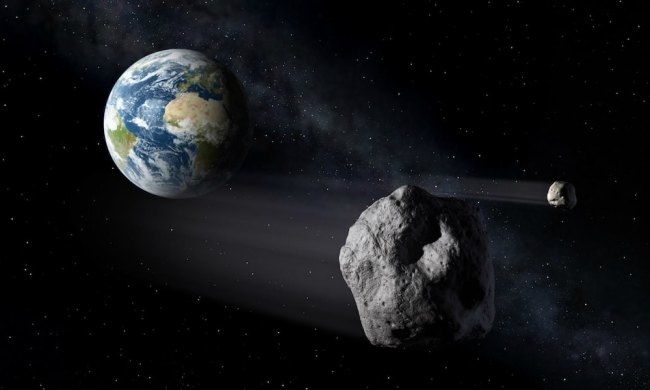An asteroid the size of the Statue of Liberty will zip by Earth in the early hours of Wednesday morning.
Labeled 2013 WV44, the 300-foot-long (91-meter-long) asteroid is traveling at an astonishing speed of 7.3 miles (11.8 kilometers) per second, so it’s a good thing that it’s not stopping off here.

NASA’s Center for Near Earth Object Studies has calculated that the flying rock, which it started tracking 10 years ago, will pass by at a safe distance of about 2 million miles (3.3 million kilometers) at 4 a.m. ET on Wednesday. That may seem like a huge distance, and in many ways it is, but when you consider it in terms of the size of our solar system, it feels much more like a very close encounter.
Asteroids are hurtling by Earth’s neighborhood all the time, and thankfully very few pose a serious threat. But it doesn’t mean that Earth will never face a perilous situation in the future, especially as we know that our planet has already suffered some catastrophic asteroid strikes. That’s why the likes of NASA and its European counterpart, ESA, are spending much time and money on monitoring deep space for such threats.
Keen to explore ways of dealing with a large asteroid calculated to be heading right for us, NASA last year tested a system designed to alter the trajectory of such an object. The DART mission smashed a spacecraft into a non-hazardous asteroid far from Earth, and data showed that it succeeded in altering its course, paving the way for engineers to work on refining the system to make it as effective as possible.
“A relatively small number of near-Earth objects pass close enough to Earth and are large enough in size to warrant close observation,” NASA says on its website. “That’s because the gravitational tug of the planets could, over time, cause an object’s orbital path to evolve into an Earth-crossing orbit. This allows for the possibility of a future collision.”
If we are ever faced with a cataclysmic asteroid encounter, you can (if there’s time) pop over to this handy website to learn more about the extent of the damage that it’s likely to cause.
Tonight, though, you can sleep soundly, secure in the knowledge that 2013 WV44’s flight path won’t even cause your curtains to flutter.


